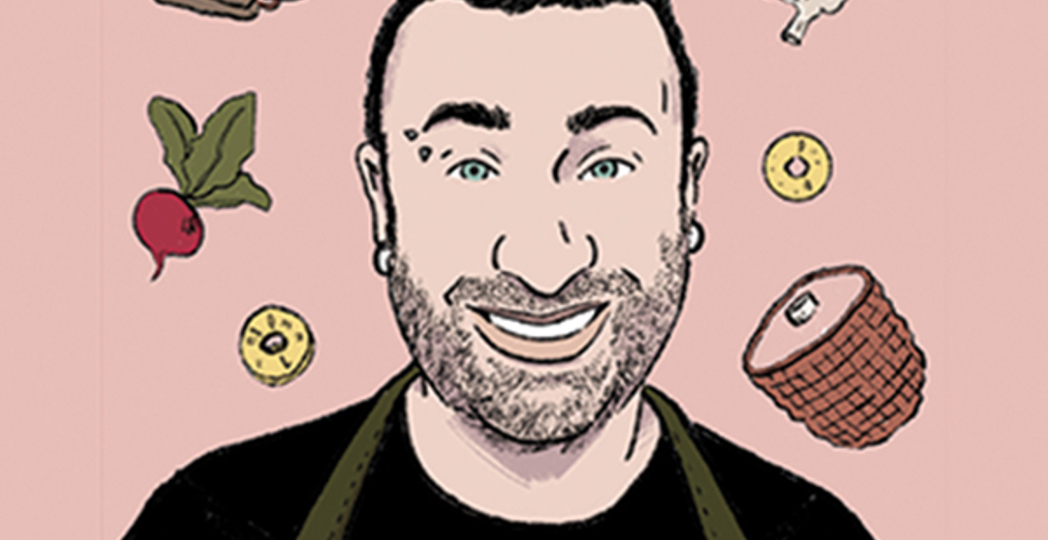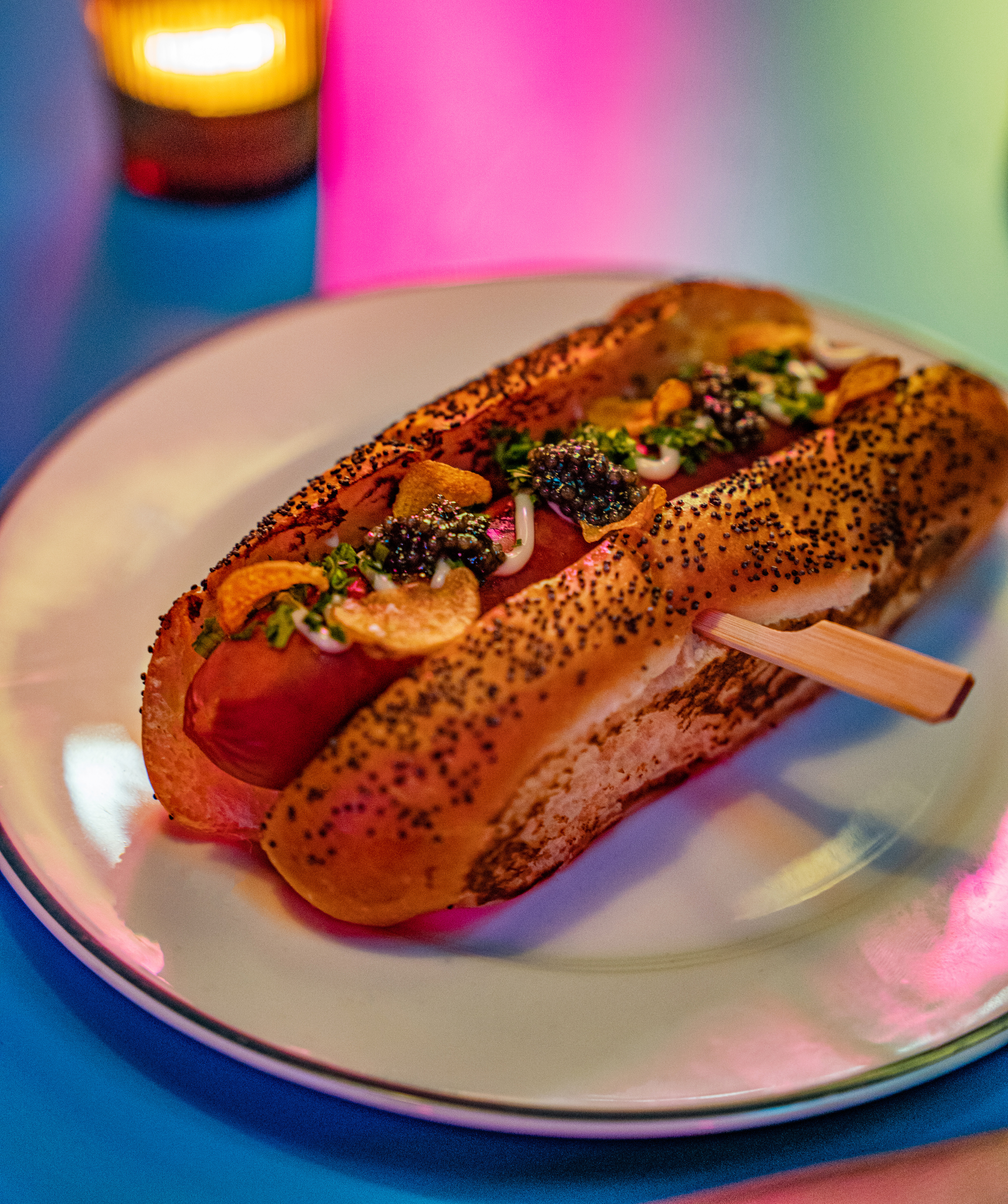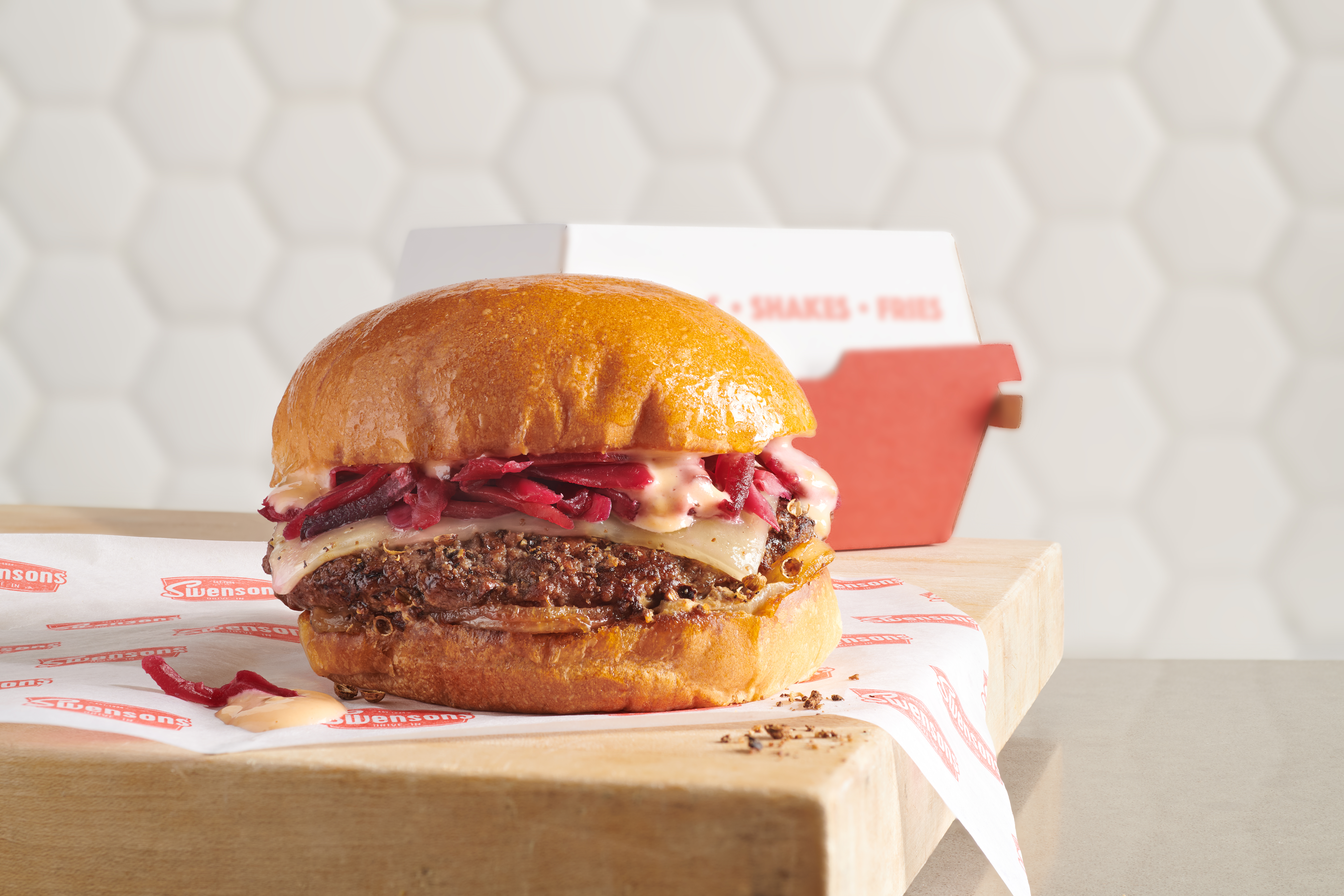Ask Chef: How to Turn Tofu, Veggies, Chicken or Fish into an Inclusive Holiday Ham
by Jeremy Umansky | Nov. 23, 2022 | 8:00 PM

There is one dish that has the power to unite us all this holiday season: ham. In an array of styles, from the luxurious Jamon Iberico of Spain to Northern Italy's culatello, this revered food sits on tables across the world during festive meals
between friends and family.
In America, what we refer to as ham is the cured and seasoned back leg of a pig, typically smoked and glazed with something delightfully sweet. While this ham is fantastic, it doesn’t do much to include our Jewish, Muslim, vegetarian or vegan friends who may not consume pork.
But from tofu to beef shank, you can turn just about anything into a ham. That's because, in this column at least, when I say ham, I'm referring to the technique by which your meat or vegetable is prepared — and the reverence with which you present it.
A perfect example of something other than pork becoming ham comes from my friend Will Horowitz, chef and owner of Ducks Eatery in New York City. A few years ago, he went viral on Instagram thanks to his watermelon ham. Salted, smoked and brined, sitting in its own juices and garnished with greens, it looked just like the original thing, and it appeared on the menu until the restaurant closed in 2020.
Why was this strange dish so popular? I think it's because no matter what it's made of, the holiday ham evokes a feeling of togetherness. It is truly a dish best shared with others. And that togetherness is something we can all use a little bit of this holiday season.
So, in this column, I'm going to give you some pointers to create your own holiday ham, but I want to see what you come up with! Think of this as a choose-your-own-adventure book. I want you to be gastronauts, exploring all the hedonistic pleasures that cooking and eating avails us. Have fun! And happy holidays.
First, select what you want to turn into a ham. Find an ingredient that will have the texture of a pork ham after it’s cooked. I suggest cauliflower, beets, tofu, seitan, beef or lamb shank, carp fish and duck, but you can pick
almost anything. Vegetables like potatoes and other starchy foods, however, will have a dry and crumbly texture not befitting of a holiday ham.
Ham must be cured. Curing is a process in which you add salt and/or sugar and spices to a food to season it, keep it moist and extend its shelf life.
Start by blending together two parts salt and one part sugar. I suggest using a quart-sized jar and shaking it up until well-blended. That 2:1 ratio can be scaled up, whether you’re cooking for a friend or your whole neighborhood.
Vegetables, firm tofu, seitan and fish should be cured at 1.5% of their weight. Meats, including poultry, should be cured to a range from 1.75% to 3% of their weight. A grossly general rule for meat is the darker the color, the stronger the cure you can use. Some wild venison hams can handle a 3% cure while beef, duck, and lamb are good around 2%. Most chicken or rabbit is delicious at 1.75%. Vegetables and fish will be too salty if cured to the same percentages that can be used for meats.
For a ham that will be eaten hot, 1.75% is appropriate, but one chilled and served sliced on a sandwich can handle up to 3% salt. This is due to how our perception of taste changes with the temperature of a given food. Animal fleshes should be trimmed and deboned prior to curing. There are always exceptions to these rules so do what feels right to you.
Follow this simple equation to convert pounds to ounces and then calculate how much salt-and-sugar cure blend you need. In this case, we’ll use the percentage for one pound of vegetables.
- 1 pound x 16 = 16 ounces
- 1.5% of 16 ounces = .24 ounces of cure
To cure, rub your raw ham with all the calculated blend. Wrap tightly in plastic wrap. Store in a non-reactive dish in your fridge until it’s cured through.
How do you know it’s cured through? That's determined by thickness. Most vegetables are fine in a couple of days to a week. Most fish are ready within 72 hours. For meats, start at a minimum of one week and add two days for every quarter inch of thickness over 2 inches. So if your meat is 2.5 inches, you need to add four days to that initial week of curing. Count backwards from the day you want to cook your ham to figure out what day to start your curing process. Flip your ham every day to help the cure work its way into the ham.
Smoke is essential for a proper ham. If you don’t have a smoker or grill, think about adding a few drops of liquid smoke to your ham cure while rubbing. You could also add smoky notes with brown sugar and smoked salt, like the one
sold by Ramat Wiley at Adun Spice Co. Black pepper, juniper, coriander and cumin also help impart a smoky flavor, as does porcini powder, finely ground coffee and dark cacao powder. Mix and match these
suggestions as you’d like, but keep
in mind: A little bit goes a very long way.
As far as spicing your ham, you can add some spices when you rub your ham with cure or wait until just before you cook the ham and spice-crust it. You could also do both or have no seasoning at all.
Seasonings can be whatever you want them to be. For something akin to a ham baked with honey, rub your ham down with sweet spice mixes such as pumpkin pie or apple pie spice. If you want to add some global flair, head to Van Aken and talk to Ramat Wiley
of Adun Spices. Trust me. Her Ras el Hanout spice mix is
life-changing and perfect for any ham.
If cooking in your oven, place ham into a roasting pan on a resting rack. Roast in an oven set to 350 degrees Fahrenheit. Smoke in a smoker or on a grill at 225 degrees. For those of you cooking sous vide, I suggest looking up some time-temp-texture charts for what you made your ham from and following those guidelines followed by a reverse sear and then glazing.
Get yourself a digital thermometer; I’ll hardly ever give you cooking times, just the temperature a food should be cooked to when finished. That said, it’ll take anywhere from 30 minutes for a block of tofu to several hours
for a pig’s leg. Whole muscle dark meat hams and poultry can be cooked to an internal temperature of 165 degrees. Fish, pork and veggies should be cooked to no more than 145
degrees.
Finish with a glaze. Make a glaze out of anything sweet that could pair with your chosen spice seasoning. Try thinned-out honey, molasses, jam or jelly with — a personal favorite of mine — mirin or amazake koji mixed with a heaping dollop of sweet white miso. Glaze in the last quarter of your cook time — when you’re three-fourths of the way to your target temperature — and bump the heat in your oven up to around 375-400 degrees to get some nice caramelization.
About the Author
Jeremy Umansky is the James Beard-recognized co-author of Koji Alchemy and chef and co-owner of Larder Delicatessen and Bakery. Don’t miss his seasonal musings on cooking in his new column for Cleveland Magazine.
Chef Wants to Hear from You!
Tag a photo of your holiday ham with #AskChefCLE or send a photo to conversation@clevelandmagazine.com, where you can also ask me a question about cooking. I can’t wait to ham it up with you!
Trending
-
1
-
2
-
3
-
4
-
5










